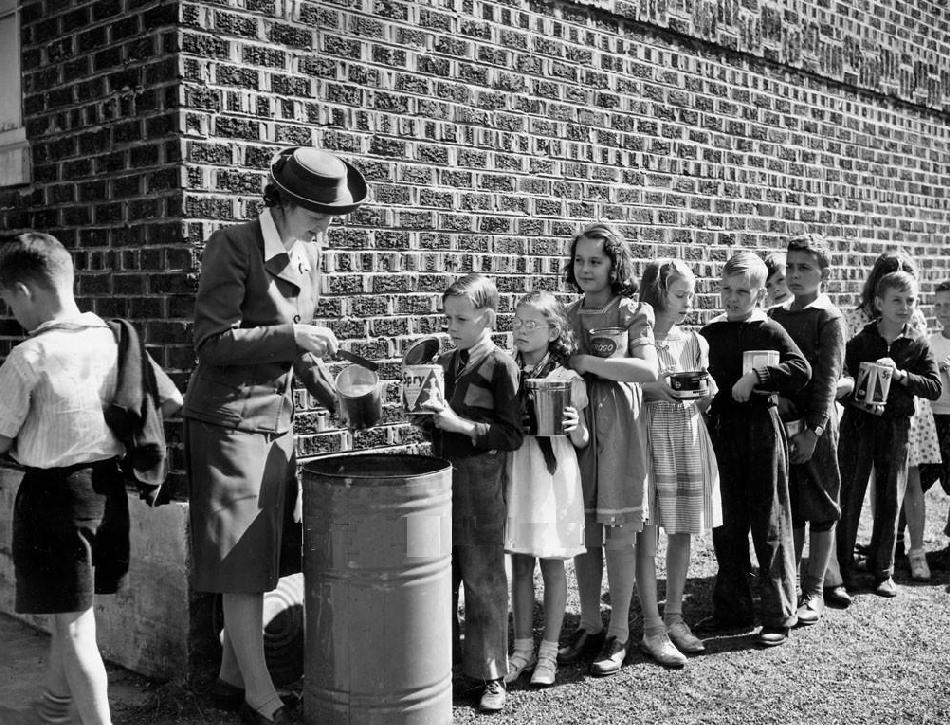
Figure 1.--Here childreb are bring fat collected at home to school on the weekly fat collection day. Fats could be used for many industrial purposes, including manufcturing explosives. In reality the effort was more a moral building effort. |

|
Another interesting material was cooking fat. This might not seem like a critical national material. There are, however, many industrial uses for fats. Fat is the a base for soap. Coconut oil and palm oil are probably the most important oils used for soap, but other fats can be used as well. Fats are also used to produce candles, paints, varnishes, leather, artificial rubber, polishes, waxes, carbon paper (once an indesmsible office supply), salves, insecticides, lubricants, cosmetics, drugs, dyes, petroleum, and synthetic resin. The reason for the cooking fat, drives especially during the early phase of the war, was that glycerin in fat is an key ingredient in explosives. Glycerine produced from fat also had a range of medical and surgical uses. The Federal Government created the American Fat Salvage Committee to convince housewives to save their excess fat rendered from cooking and donate it to produce explosives. Houswives were incouraged to bring what ever fat they collected back to their butcher. There were also school drives. Houswives were instructed to fry out and strain chunks of fat. Minnie Mouse and Pluto were recruited for a movie theater cartoon to promote the drive. One pound of fat was said tp contained sufficient glycerin to make about a pound of explosives. It took 350 pounds of fat to fore one 12 inch naval gun shell. Not all housewives participated, but about half did. Cooking (meaning saturated) fats were not seen as a health risk at the time. They were used in cooking and for such purposesea as seasoning greens. And once rationing was introduced, some housewives fid not want to turn over fats. The plan was that once a pound or more was collected, the fat was to be delivered to any one of 0.25 million participating butchers and retail establishments. Some 4,000 frozen food plants then turned them over to the Army. The housewife got 4 cents a pound for the fat When lard and butter began to be rationed (December 1943), the government began offering two ration points per pound. The ffort like much of the collection programs was nost important as a morale boosting effort. The types of explosives made with collected fats were not of major importance to the war effort. America had the resources to manufacture the explosives needed. Keeping of morale on the home font was important.
Navigate the CIH World war II Section:
[Return to Main American World War II scrap drives material page]
[Return to Main American World War II conservation and recycling page]
[Return to Main Arsenal of democracy page]
[Return to Main World War II economics page]
[Return to Main U.S. World War II page]
[Return to Main World War II page]
[About Us]
[Aftermath]
[Biographies]
[Campaigns]
[Children]
[Countries]
[Deciding factors]
[Diplomacy]
[Geo-political crisis]
[Economics]
[Home front]
[Intelligence]
[POWs]
[Resistance]
[Race]
[Refugees]
[Technology]
[Totalitarian powers]
[Bibliographies]
[Contributions]
[FAQs]
[Images]
[Links]
[Registration]
[Tools]
[Return to Main World War II page]
[Return to Main war essay page]
[Return to CIH Home page]
